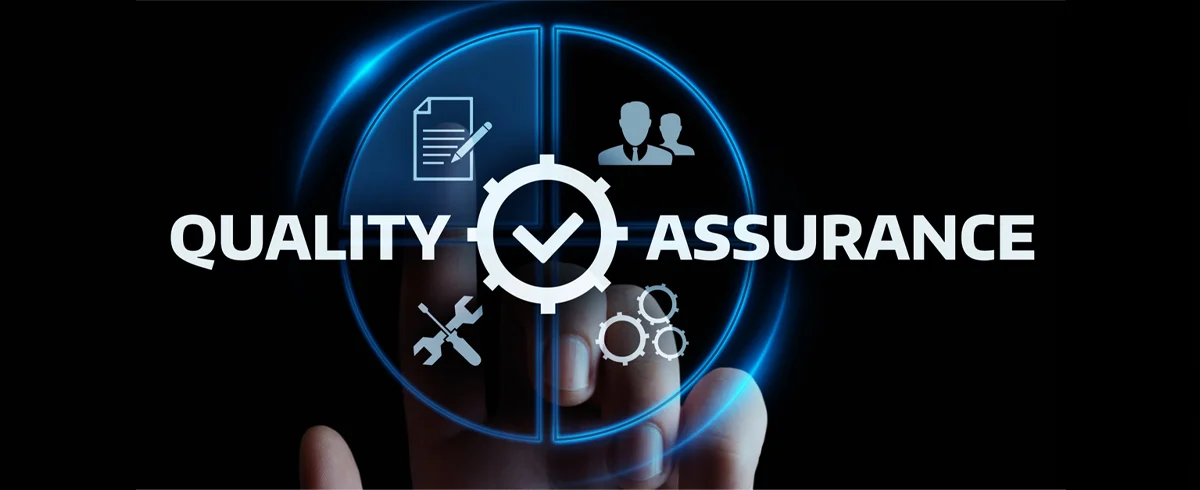Necessary Always Active
Necessary cookies are required to enable the basic features of this site, such as providing secure log-in or adjusting your consent preferences. These cookies do not store any personally identifiable data.
|
||||||
|
||||||
|
||||||
|

The primary goal of every company, regardless of industry, is to create products that foster customer retention, build trust, and drive consistent revenue growth. One way to achieve this is through quality management which covers a range of customer success activities including quality assurance and quality control. These two terms are often confused with each other. In fact, some have normalized using them interchangeably.
The confusion is understandable since they are interrelated aspects of quality management that ensure products meet the industry standard. But that doesn’t mean we have to ignore their obvious differences.
While their intentions are similar, their approaches differ. Understanding these differences will help a company follow due process to produce and maintain high-quality products or services.
At the end of this article, you will understand the differences between Quality Assurance and Quality Control, and their relationship, with clear examples to illustrate what they mean.
Quality assurance is an aspect of quality management. It ensures procedures are taken to keep quality high and uniform during production. The process covers all aspects of product development, from raw material and human resources to process validation.
Quality assurance requires planning, testing, and monitoring to achieve its goal. The test has to be carried out and passed before production starts. Then, the production process is monitored to ensure the standards are followed strictly.

If the standardized method is deviated during the test, the quality assurance inspectors ensure necessary adjustments are made to prevent defects.
Quality assurance saves fleet management companies from costly recalls. A software company for example wouldn’t want a major bug discovered after the product has been launched. That would ruin the reputation of the company. Quality assurance can help prevent this from happening. It is very important, and that’s why it is handled at the managerial level.
Quality control is the aspect of quality management that ensures that final products meet the industry’s criteria. This involves inspecting, testing, and evaluating the product during or after production. This is done to detect any deviation from the standards.
The most crucial point about quality control is that it detects errors already made. This is different from quality assurance, which is a pre-production process.
During quality control, all the factors involved in the production are reviewed. The deviations are recorded and reported to the management, which decides the next step of action.

There may be slight changes in the process across different industries depending on the specific requirements and customer expectations. Quality control in manufacturing isn’t exactly the same as in the software industry. But at the end of the day, The purpose of quality control is to provide confidence that a product is safe and effective.
Below are some of the key differences between Quality assurance and Quality control.
| Features | Quality Assurance | Quality Control |
|---|---|---|
| Execution Stage | Quality assurance is conducted before and through the entire production process | Quality Control is performed after production |
| Role and responsibility | The roles associated with quality assurance are broad. It spans from establishing standard procedures to ensuring compliance with quality standards. | Quality control only involves operational staff, such as technicians, whose responsibility is to execute the quality control test. |
| Timeline | Quality assurance is a long-term process that may take days, weeks, or even months. | Quality control is carried out within a shorter timeline. |
| Corrective vs. preventive actions | Quality assurance takes preventive action to tackle problems before they even arise. | Quality control involves identifying and correcting problems that are discovered during testing. |
In addition, quality assurance and quality control are referred to as part of quality management focused on providing a guarantee and fulfilling the quality requirements.
Now that you know the differences between quality assurance and quality control, let’s apply this to a real-world example.
Let’s say a wall socket-producing company needs to produce a new line of wall sockets based on a new design. During the design and development stage, the manufacturer designs controls and processes required for consistent quality.
Some of these efforts, including calibration of equipment and giving verbal and written instructions to the workers is under quality assurance.
As the wall sockets come off the production line, inspectors periodically collect samples for testing. They check if the measurements are accurate, the screws are properly tightened, and the sockets function as expected.
If a defect is found, such as a missing hole in the socket, inspectors immediately notify the technicians to troubleshoot and adjust the machine settings. This prompt correction is an example of quality control in action.
In conclusion, quality assurance is a preventive measure, while quality control is a corrective measure.
Sign up to receive our newsletter featuring the latest tech trends, in-depth articles, and exclusive insights. Stay ahead of the curve!